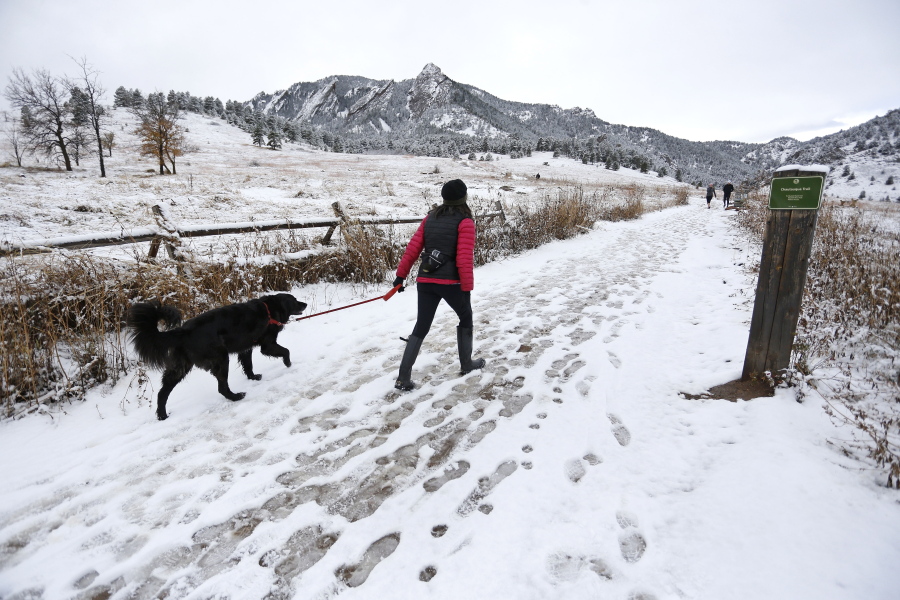Interior designer Heather Mourer and her family were considering a move from Denver when her young daughter saw a mountain lion across the street from the mid-century home in the suburbs they were considering.
They took the Golden, Colo., house anyway, with its view of the Rocky Mountain Front Range and just 20 minutes west of downtown Denver, moving in two years ago with their 50-pound mixed breed dog Ruby. Soon after, they inherited Chacha, a Chihuahua mix, and Mourer set out to inform herself about keeping pets safe, entering terms such as “fences to keep mountain lions out” into an internet search engine.
Animal welfare advocates urge pet owners living at the edge of wildland to learn as much as they can about being safe and responsible neighbors to lions and coyote and bears.
And it’s become increasingly important: In a recent study on urbanization, the think tank Conservation Science Partners found that at any moment in the Western U.S., a bear is about 3.5 miles from significant human development.
A fence was deemed impractical after Mourer read it would need to be 12 feet tall to keep out a big cat. She has instead taken such steps as keeping the yard clear of rocks under which rodents could nest. Rabbits and mice might draw predators who would then become accustomed to being near the house and its prey-sized pets. The dogs’ food and water are inside. Unless it’s pickup day, trash cans are in the garage so as not to draw bears.
Mourer also is doing what veterinarians, animal shelter custodians and veteran mountain-area dwellers recommend: Keeping her dogs inside unless she is with them, and walking Ruby and Chacha on leashes to ensure they don’t run off alone. Mountain lions rarely attack when people are close.
In nearby Boulder, a town of 100,000 with extensive mountain parks and open spaces, rangers last year began allowing dogs on certain trails off-leash as long as their owners had viewed a video training course and could ensure their pets will be in sight and respond to voice commands.
“Training matters,” said Cory Smith, who is in charge of pet policy for the Washington, D.C-based Humane Society of the United States. She said the society recommends dogs be kept on leashes for their own safety and to ensure they don’t chase after or kill wild animals.
It’s not just dogs that shouldn’t wander, said Sue LeBarron, who manages the animal shelter for Clear Creek and Gilpin, Rocky Mountain counties west of Denver.
Her shelter recently built a “catio,” providing both a place for cats awaiting adoption to play and a model pet owners are encouraged to copy. Catios range from glorified window boxes built of lengths of wood covered in chicken wire to spacious verandas entirely enclosed in wire mesh. There, Fluffy can chase butterflies in the sun, safe from coyotes. As an added benefit, catioed cats won’t get into tussles with rabid raccoons or hunt birds.
LeBarron has heard owners say their cats will have a “fuller life” if they can roam.
“But they tend to live a much shorter life,” she said. “There’s just too many hazards out there — coyotes, foxes.”
The concerns and responsibilities of pet owners in the cities aren’t so different from those of animal lovers in wilder places.
After Chris Shump moved to Vail 25 years ago, he was initially angered when he got a ticket for walking his dog without a leash.
Shump now understands the importance of keeping dogs leashed.
“It’s not like these things are out to get you,” he said. “We’re in their habitat.”




